This Is What It Looks Like When a Black Hole Destroys a Galaxy
And you think you've got problems. Take a look at nearby galaxy Centaurus A, which is in a losing battle with a black hole nearly 55 million times bigger (in terms of mass) than our sun. As it dies, its guts are being sprayed out in a trail of carnage 2 million light-years long, and NASA has the intergalactic snuff film to prove it.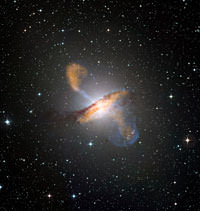
And you think you’ve got problems. Take a look at nearby galaxy Centaurus A, which is in a losing battle with a black hole nearly 55 million times bigger (in terms of mass) than our sun. As it dies, its guts are being sprayed out in a trail of carnage 2 million light-years long, and NASA has the intergalactic snuff film to prove it. — PZS
Update: A couple of commenters below have challenged the premise of this post. As sometimes happens when mere bloggers report on scientific discovery, we may have gotten our facts wrong (namely that the black hole in question is in fact destroying the galaxy in question). We’re looking into it. Thanks to the commenters for pointing this out.
NASA via Engadget:
Text and images from NASA:
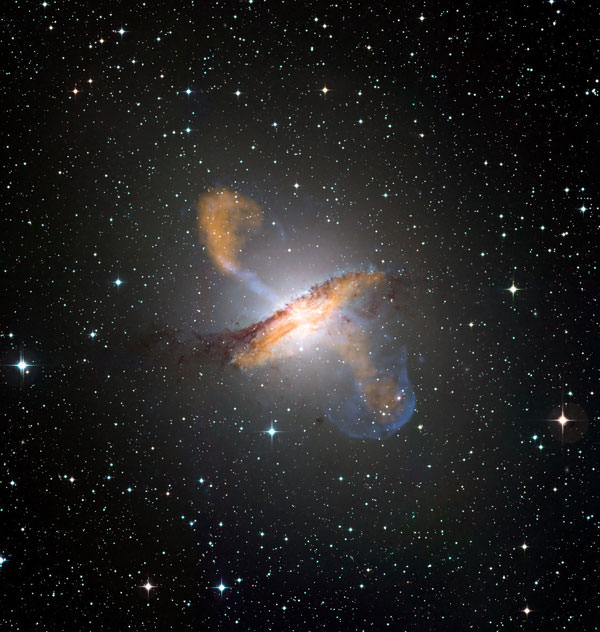 Merging X-ray data (blue) from NASA’s Chandra X-ray Observatory with microwave (orange) and visible images reveals the jets and radio-emitting lobes emanating from Centaurus A’s central black hole. Credit: ESO/WFI (visible); MPIfR/ESO/APEX/A.Weiss et al. (microwave); NASA/CXC/CfA/ R.Kraft et al. (X-ray)
Merging X-ray data (blue) from NASA’s Chandra X-ray Observatory with microwave (orange) and visible images reveals the jets and radio-emitting lobes emanating from Centaurus A’s central black hole. Credit: ESO/WFI (visible); MPIfR/ESO/APEX/A.Weiss et al. (microwave); NASA/CXC/CfA/ R.Kraft et al. (X-ray)
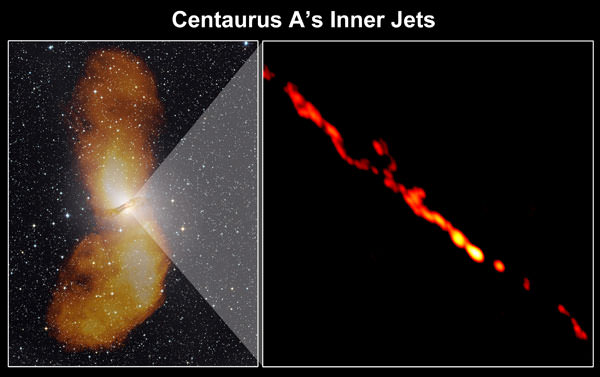 Left: The giant elliptical galaxy NGC 5128 is the radio source known as Centaurus A. Vast radio-emitting lobes (shown as orange in this optical/radio composite) extend nearly a million light-years from the galaxy. Credit: Capella Observatory (optical), with radio data from Ilana Feain, Tim Cornwell, and Ron Ekers (CSIRO/ATNF), R. Morganti (ASTRON), and N. Junkes (MPIfR). Right: The radio image from the TANAMI project provides the sharpest-ever view of a supermassive black hole’s jets. This view reveals the inner 4.16 light-years of the jet and counterjet, a span less than the distance between our sun and the nearest star. The image resolves details as small as 15 light-days across. Undetected between the jets is the galaxy’s 55-million-solar-mass black hole. Credit: NASA/TANAMI/Müller et al.
Left: The giant elliptical galaxy NGC 5128 is the radio source known as Centaurus A. Vast radio-emitting lobes (shown as orange in this optical/radio composite) extend nearly a million light-years from the galaxy. Credit: Capella Observatory (optical), with radio data from Ilana Feain, Tim Cornwell, and Ron Ekers (CSIRO/ATNF), R. Morganti (ASTRON), and N. Junkes (MPIfR). Right: The radio image from the TANAMI project provides the sharpest-ever view of a supermassive black hole’s jets. This view reveals the inner 4.16 light-years of the jet and counterjet, a span less than the distance between our sun and the nearest star. The image resolves details as small as 15 light-days across. Undetected between the jets is the galaxy’s 55-million-solar-mass black hole. Credit: NASA/TANAMI/Müller et al.
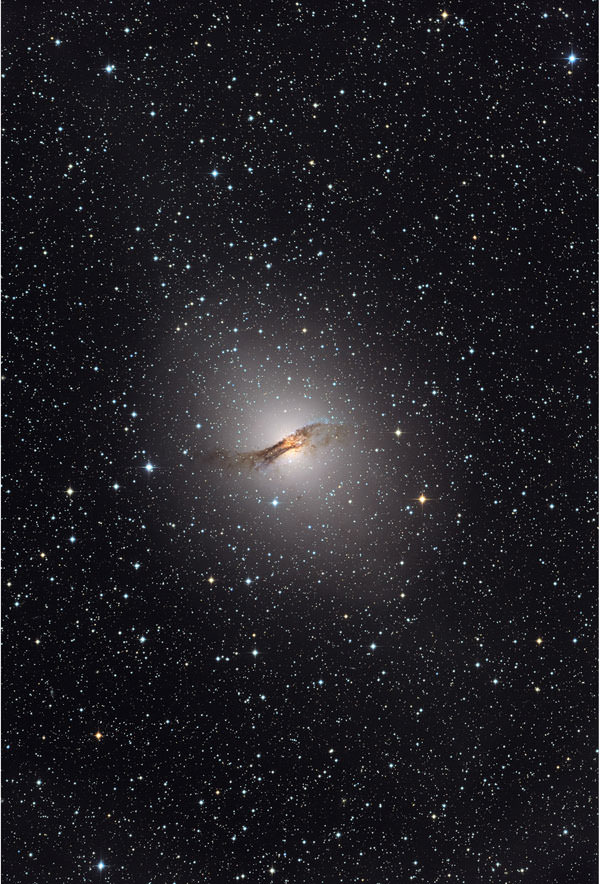 The elliptical galaxy NGC 5128, host of the Centaurus A radio source, as it appears in visible light. The galaxy is about 12 million light-years away and is one of the closest that sports an active supermassive black hole. Credit: Capella Observatory
The elliptical galaxy NGC 5128, host of the Centaurus A radio source, as it appears in visible light. The galaxy is about 12 million light-years away and is one of the closest that sports an active supermassive black hole. Credit: Capella Observatory
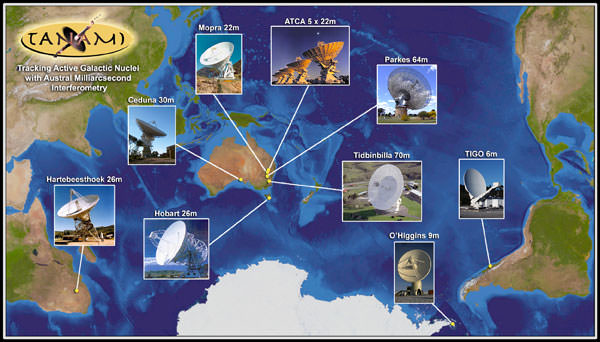 The TANAMI array consists of nine radio telescopes on four continents. By combining data from the individual telescopes, astronomers can acquire images with the sharpness of a single telescope some 6,200 miles (10,000 kilometers) across — about 80 percent of Earth’s diameter. Credit: Matthias Kadler (University of Würzburg) and J. Wilms (University of Erlangen-Nuremberg)
The TANAMI array consists of nine radio telescopes on four continents. By combining data from the individual telescopes, astronomers can acquire images with the sharpness of a single telescope some 6,200 miles (10,000 kilometers) across — about 80 percent of Earth’s diameter. Credit: Matthias Kadler (University of Würzburg) and J. Wilms (University of Erlangen-Nuremberg)
Independent journalism is under threat and overshadowed by heavily funded mainstream media.
You can help level the playing field. Become a member.
Your tax-deductible contribution keeps us digging beneath the headlines to give you thought-provoking, investigative reporting and analysis that unearths what's really happening- without compromise.
Give today to support our courageous, independent journalists.


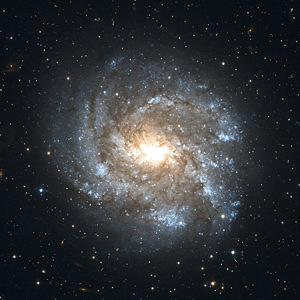



You need to be a supporter to comment.
There are currently no responses to this article.
Be the first to respond.